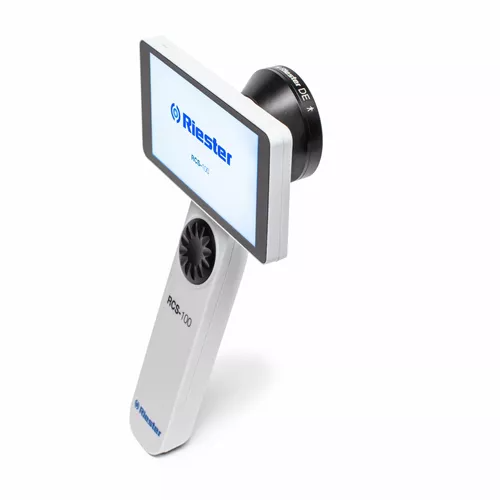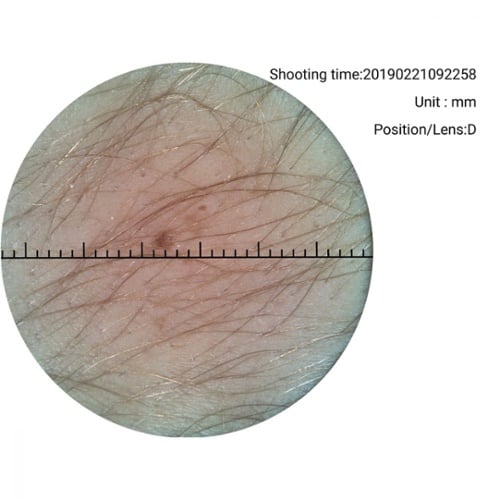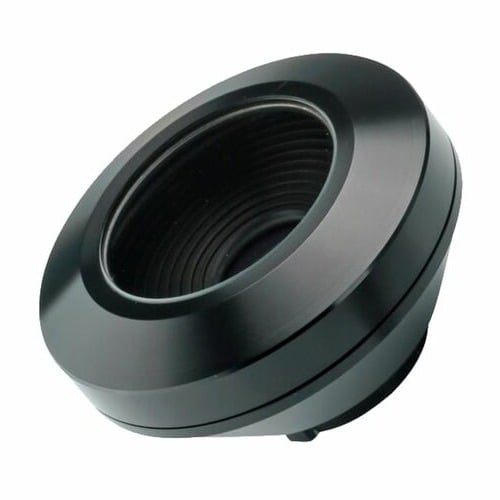RCS-100 Digital Dermatoscope
RCS-100 medical camera with dermatoscope lens can substitute or replace the traditional dermatoscopy devices, providing the additional benefit of capturing and sharing the digital photograph or video of the epidermis and dermis of the skin.
This is a real image of Rosacea.
RCS-100 with dermatoscope lens
Utilising RCS-100 with dermatoscope lens can support accurate identification and measurement of skin lesions with a digital movable ruler without the need for immersion.
Clinical photography in dermatology
Images are particularly important because dermatology is a medical specialty where most of the diagnoses are made with visual observation. Like in many other medical specialties, in dermatology too clinical photography has become an integral part of standard care.1, 2 Furthermore, photos are widely being used for documenting changes in pathology or healing process over time, as an effective communication tool, to make accurate and timely diagnosis, and as the most accurate tool in medical record.1, 3
Product details
| RCS-100 Dermatoscope Lens |
|---|
| Dimensions in mm / in | 62.1 mm x 62.1 mm x 36.0 mm 24.4 in x 24.4 in x 1.42 in |
| Weight | 108.5 g (3.83 oz) |
| F/# (focal length/width) | 2.2 |
| Object distance | 0 mm |
| Field of view | Ø 30 mm |
| Photography source | Natural light LED |
| LED colour temperance | 4000 K |
| Optical magnification | 2.5x |
| Digital magnification | 4x |
| RCS-100 |
|---|
| Size | 225 mm x 135 mm x 45 mm |
| Weight | 292.0 g |
| Focus | Automatic / Manual |
| Image format | JPEG |
| Video format | MP4 |
| Adapt input | 100 - 240 VAC, 50/60 Hz, 0.3 A |
| Adapt outnput | 5 VDC, 2 A |
| USB | OTG and type-C USB |
| Extend memory (OPT) | 16 GB Wi-Fi SD card |
| RAM | 2 GB LPDDR3 |
| ROM | 16 GB |
| CMOS sensor resolution | Total number of pixels: 3296 (H) x 2512 (V) approx. 8.28 M pixels Number of effective pixels: 3296 (H) x 2480 (V) approx. 8.17 M pixels Number of active pixels: 3280 (H) x 2464 (V) approx. 8.08 M pixels |
| Battery | 3.6 V, 2600 mAh, Li-ion battery (type 18650) Video 3.5 hours (fully charged battery at 25 °C ambient temperature) |
Ordering information
RCS-100
| ART. NO. | REGION | DESCRIPTION |
|---|---|---|
| 1970-H | All | RCS-100 basic model, no lenses |
| 1970-HDXX1 | All except US | RCS-100 basic model, dermatoscope lens |
| 1970-HDGO | All | RCS-100 basic model, otoscope, dermatoscope and general lens |
| 1970-HDGX | All except US | RCS-100 basic model, dermatoscope and general lens |
| 1970-HDXO | All except US | RCS-100 basic model, dermatoscope and otoscope lens |
1: USA: Art. 1970-H + 13270
Lenses and Adapters
| ART. NO. | REGION | DESCRIPTION |
|---|---|---|
| 13270 | All | Dermatoscope lens |
Accessories
| ART. NO. | REGION | DESCRIPTION |
|---|---|---|
| 13274 | All except US | Case for RCS-100, black |
| 10725 | All | Li-ion battery (type 18650) for RCS-100 |
Downloads
The RCS-100 Medical Camera System
Learn more about the RCS-100 with a choice of lenses and adapters that can be used to assess a patient's ears, throat, skin and more.
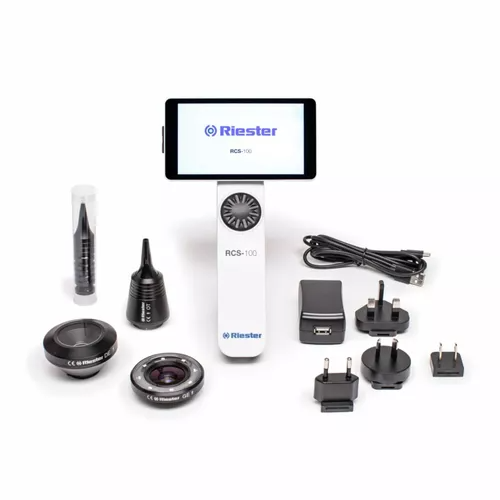
RCS-100 Medical Camera System
RCS-100 Medical Camera System is available with a choice of lenses and adapters.
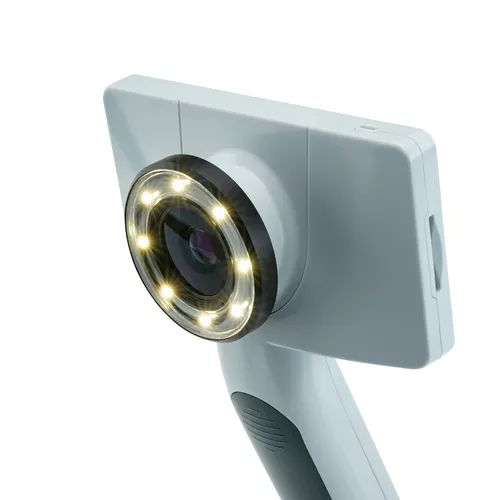
RCS-100 with General Lens
RCS-100 Medical Camera System with General Lens can be utilised for a general initial screening.
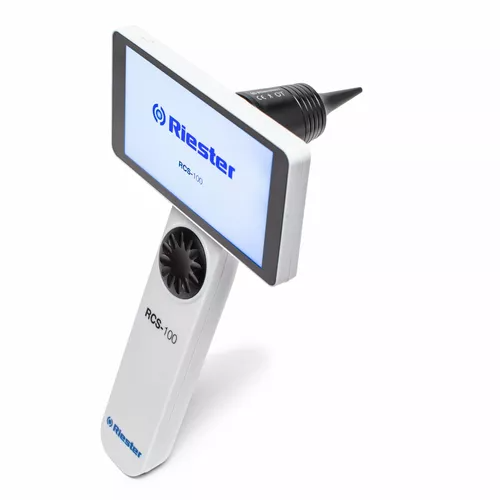
RCS-100 Digital Otoscope
RCS-100 Medical Camera System with Otoscope Lens for digital otoscopy.
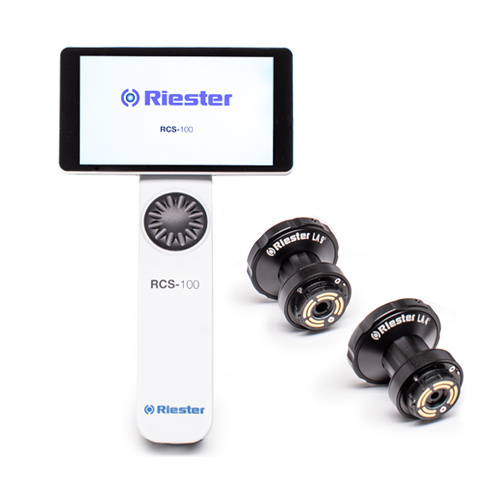
RCS-100 with Endoscope Adapters
RCS-100 Medical Camera System with two different Endoscope Adapters.
Where to buy?
Riester products are available in over 150 countries. Enter your country to easily find an authorized Riester distributor near you.

Van der Rijt, R., & Hoffman, S. (2014). Ethical considerations of clinical photography in an area of emerging technology and smartphones. Journal of Medical Ethics, 40(3), 211-212. https://doi.org/10.1136/medethics-2013-101576

Burns, K., & Belton, S. (2012). “Click first, care second” photography. Medical Journal of Australia, 197(5), 265. https://doi.org/10.5694/mja11.11278

Lakdawala, N., Fontanella, D., & Grant-Kels, J. M. (2012). Ethical considerations in dermatologic photography. Clinical Dermatology, 30(4), 486-491. https://doi.org/10.1016/j.clindermatol.2011.07.002

